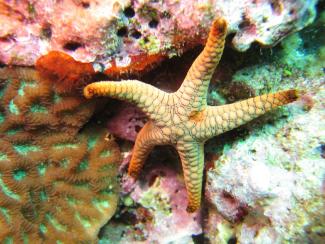
Instructions
Do the preparation task first to help you with the difficult vocabulary. Then read the text and do the exercises below to check your understanding.
Defence
Starfish have arms, spines and a mouth on the underside of its body. But what scientists are finding really interesting is the sticky liquid which starfish produce when they feel threatened. This liquid contains properties which may be very useful in treating certain kinds of inflammatory illnesses. Doctor Charlie Bavington is Managing Director of Glycomar, a marine biotechnology company based at the Scottish Association for Marine Science in Oban. With access to starfish, he is working with Clive Page, Professor of Pharmacology at King’s College London.
Non-stick
The project, he explains, came out of him meeting other scientists at a wedding. Scientists from different disciplines were chatting and the idea emerged of ‘taking the non-stick properties of starfish and trying to apply it in a medical situation, and asthma was the application’. Because Clive Page is a Respiratory Pharmacologist, they got funding. Doctor Bavington got involved early on, having changed from marine biology to clinical biochemistry. ‘I was studying the same sort of molecules in starfish as I’d been studying in man; there was a connection.’
Inflammatory cells
Doctor Bavington left to work somewhere else but when he returned to the project it inspired him to set up a company which connects together the medical application with the marine source. ‘We looked at a wide range of applications not just of the sticky liquid but also of the actual skin surface. Obviously they are covered not only in seawater, but in all sorts of bacteria, larvae and barnacles, looking for somewhere to live and settle. Starfish need to have an effective defence and part of that is a kind of non-stick property, including the liquid.’ He explains that it is similar to where there ‘is inflammatory cells circulating around in the blood system and when there is inflammation they stick to the blood vessel wall.’ When the cells migrate into the blood vessel wall, into the tissue, they are responsible for the inflammation. If Doctor Bavington, Professor Page and the other scientists can regulate the sticking and migrating process then they may have a new class of treatment.
What other amazing medicines do you know?

Comments